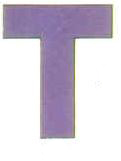No. 3 Mining Company
From Our Contribution
 | |
Contents
[hide]Brief History
Recruiting for the Miners’ Corp had indertaken in late 1915 in each state of Australia, accepting men of all ages up to 49 years with mining experience. .
At Blackboy Hill camp, W.A. the Western Australian contingent undertook basic training, with recruits allotted to the Mining Corps as from December 1st. The Unit’s title at thjis time was the No. 3 Company, Mining Corps with a strength of 1 Officer and 274 Other Ranks who embarked from Fremantle on December 18, 1915 sailing to Sydney, NSW on board the troopship SS Indarra.
On Boxing Day (Dec 26th), 1915 the Unit arrived in Sydney and marched into Casula Camp, near Liverpool, NSW where they were joined by the 4th Section of the Tasmanian Miners, bringing the establishment strength up to 15 officers and 349 Other Ranks under the command of 2nd Lieutenant L.J. Coulter. They then joined the other companies from all states in final training for the front.
At a civic parade in the Domain, Sydney on Saturday February 19, 1916, a large crowd of relations and friends of the departing Miners lined the four sides of the parade ground. Sixty police and 100 Garrison Military Police were on hand to keep the crowds within bounds. The scene was an inspiriting one. On the extreme right flank, facing the saluting base, were companies of the Rifle Club School; next came a detachment of the 4th King’s Shropshire Light Infantry, then the bands of the Light Horse, Liverpool Depot, and on the left, rank upon rank, of the Miners’ Battalion.
1,248 members of the Corps boarded HMAT A38 Ulysses in Sydney, NSW on February 20 and sailed for the European theatre. Arriving in Melbourne, Victoria on February 22 the Miners camped at Broadmeadows for a stay of 7 days while further cargo was loaded. Another parade was held at the Broadmeadows camp on 1 Mar 1916, the Miners’ Corps being inspected by the Governor-General, as Commander-in-Chief of the Commonwealth military forces.
Leaving Melbourne on March 1, HMAT A38 Ulysses arrived at Fremantle, Western Australia on March 7 where a further 53 members were taken on board. On Wednesday March 8, 1916 the whole force, with their band and equipment, paraded at Fremantle prior to leaving Victoria Quay at 9.30am. The ship hit a reef when leaving Fremantle harbour, stripping the plates for 40 feet (12.5 metres) and, although there was a gap in the outside plate, the inner bilge plates were not punctured. The men on board nicknamed her ‘Useless’. While basic repairs were undertaken, the Miners were off-loaded and sent to the Blackboy Hill Camp where further training was conducted.
Finally departing Fremantle on 1 April 1916, the Ulysses voyaged via Suez, Port Said and Alexandria in Egypt. The Captain of the ship was reluctant to take Ulysses out of the Suez Canal because he felt the weight of the ship made it impossible to manoeuvre in the situation of a submarine attack. The troops were transshipped to HMT Ausonia (numbered B.1), on 28 April and then on to Valetta, Malta before disembarking at Marseilles, France on May 5, 1916. As a unit they moved by train from Marseilles on May 7 to Hazebrouck, arriving 7 May 1916.
Soon after arrival in France, the Australian Mining Corps ceased to exist as a whole and it was redesignated into three Tunnelling Companies which were dispersed where the British Armies required them immediately.
Unit Personnel
- William Harrington Edward Watson 30 Nov 1915 - 31 Jul 1916
Notes
External Links
Notes